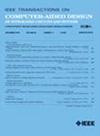MinMaxEntropy:信息论中边信道泄漏的边界模型误差
IF 2.9
3区 计算机科学
Q2 COMPUTER SCIENCE, HARDWARE & ARCHITECTURE
IEEE Transactions on Computer-Aided Design of Integrated Circuits and Systems
Pub Date : 2025-02-12
DOI:10.1109/TCAD.2025.3541187
引用次数: 0
摘要
侧通道攻击和评估一直在不断地追求准确的泄漏模型,并试图解决以下问题:“我的泄漏模型有多好?”然而,现有的工作并没有很好地减轻攻击者和评估者的模型假设误差和估计误差。最近提出的最大熵分布(MED)模型不依赖于任何假设,而是采用非线性规划牛顿-拉夫森方法拟合泄漏分布,从而避免了假设误差,使估计误差任意小。它试图解决一个更基本的问题:“如何实现最佳泄漏模型?”,但仍然面临两个问题:1)MED模型与泄漏分布偏差大;2)模型剖面所需力矩难以确定。在本文中,我们首先引入非线性规划优化Levenberg-Marquardt和共轭梯度方法来解决第一个问题。然后利用Hopfield神经网络求解泄漏模型的最小熵。与MED表示理论上最无偏、客观、合理的泄漏模型不同,最小熵对应的是理论上最偏、主观、不合理的泄漏模型。这有助于我们从泄漏模型中估计误差的最大熵和最小熵中建立一个MinMaxEntropy界,理论上表示未使用的高阶矩所包含的信息量。这个边界井为MED模型所需的矩约束提供了理论支持,从而很好地解决了第二个问题。实验结果充分证明了上述方案的优越性。本文章由计算机程序翻译,如有差异,请以英文原文为准。
MinMaxEntropy: Bound Model Errors for Side-Channel Leakages From Information Theory
Side-channel attacks and evaluations have been incessantly pursuing an accurate leakage model and try to address the following question: “How good is my leakage model?” However, the existing works do not well alleviate the attackers and evaluators from model assumption error and estimation error. The recent work named maximum entropy distribution (MED) model does not depend on any assumptions but uses nonlinear programming Newton-Raphson method to fit the leakage distribution, thus avoiding assumption error and making the estimation error arbitrarily small. It tries to address a more fundamental problem: “How to achieve the optimal leakage model?,” but still have to face with two issues: 1) the large deviation of MED model from leakage distribution and 2) the difficulty in determining the moments required in model profiling. In this article, we first introduce the nonlinear programming optimizations Levenberg-Marquardt and Conjugate Gradient methods to tackle the first issue. We then exploit Hopfield neural network to solve the minimum entropy for leakage model. Unlike the MED indicating the theoretically most unbiased, objective and reasonable leakage model, the minimum entropy corresponds to the theoretically most biased, subjective and unreasonable leakage model. This facilitates us to build a MinMaxEntropy bound from the maximum entropy and minimum entropy for estimation errors in leakage model, which theoretically represents the amount of information contained on unused higher moments. This bound well provides theoretical support for the moments constraints required to profile the MED model, thus well tackling the second issue. Experimental results fully demonstrate the superiority of our above schemes.
求助全文
通过发布文献求助,成功后即可免费获取论文全文。
去求助
来源期刊
CiteScore
5.60
自引率
13.80%
发文量
500
审稿时长
7 months
期刊介绍:
The purpose of this Transactions is to publish papers of interest to individuals in the area of computer-aided design of integrated circuits and systems composed of analog, digital, mixed-signal, optical, or microwave components. The aids include methods, models, algorithms, and man-machine interfaces for system-level, physical and logical design including: planning, synthesis, partitioning, modeling, simulation, layout, verification, testing, hardware-software co-design and documentation of integrated circuit and system designs of all complexities. Design tools and techniques for evaluating and designing integrated circuits and systems for metrics such as performance, power, reliability, testability, and security are a focus.

 求助内容:
求助内容: 应助结果提醒方式:
应助结果提醒方式:


